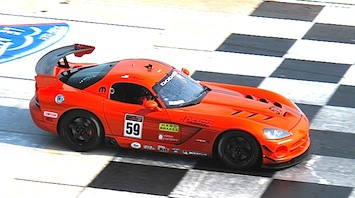Testimonials
World Challenge GTS Success
Winning Tech for Dodge Viper Cup
we had a LOT of success this weekend in the Hard Brakes Ti backing plates helping control the extreme temps of our factory Nismo calipers... We were...
Read More ->
Winning Tech for Dodge Viper Cup

Another Dodge Viper Cup win for us! Thanks for the heat shields! The brakes were working overtime with 100 lbs of rewards weight on the car (and also...
Read More ->
Specials

DPF7876 Titanium Brake Shim for Alcon, Mitsubishi EVO FQ
$97.99
Sale: $68.59
Special: 30% off
Sale: $68.59
Special: 30% off
Track Wisdom
Brake heat shields vs brake cooling ducts: which is better?
Cooling ducts will help when the car is in motion, however at slower speeds and when stopped in pits/paddock your caliper/seals/boots/fluid can soak up a lot of heat. Our heat shields will help you there, in addition to when hammering the brakes at speed. We are not just making this stuff up, your brake system can suffer significant heat damage long after you have stopped racing.
Consider this quote from "Sports Car and Competition Driving", by Paul Frere:
It is particularly important that when the car has been stopped for a short time -- up to 15 or 20 minutes after a drive in which the brakes have become very hot -- the pedal is depressed for a check. When the car is at rest, brakes act as a heat sink from which heat spreads to the fluid contained in the calipers; brakes which were fully operative when the car was driven may have become totally inefficient after it has stood awhile.
The heat shields are much easier to install than routing ductwork through your car, and may provide all of the protection you need. If you are suffering from serious bad-ass brake heat issues there is a good chance that you will want to use both heat shields and cooling ducts.
Consider this quote from "Sports Car and Competition Driving", by Paul Frere:
It is particularly important that when the car has been stopped for a short time -- up to 15 or 20 minutes after a drive in which the brakes have become very hot -- the pedal is depressed for a check. When the car is at rest, brakes act as a heat sink from which heat spreads to the fluid contained in the calipers; brakes which were fully operative when the car was driven may have become totally inefficient after it has stood awhile.
The heat shields are much easier to install than routing ductwork through your car, and may provide all of the protection you need. If you are suffering from serious bad-ass brake heat issues there is a good chance that you will want to use both heat shields and cooling ducts.











